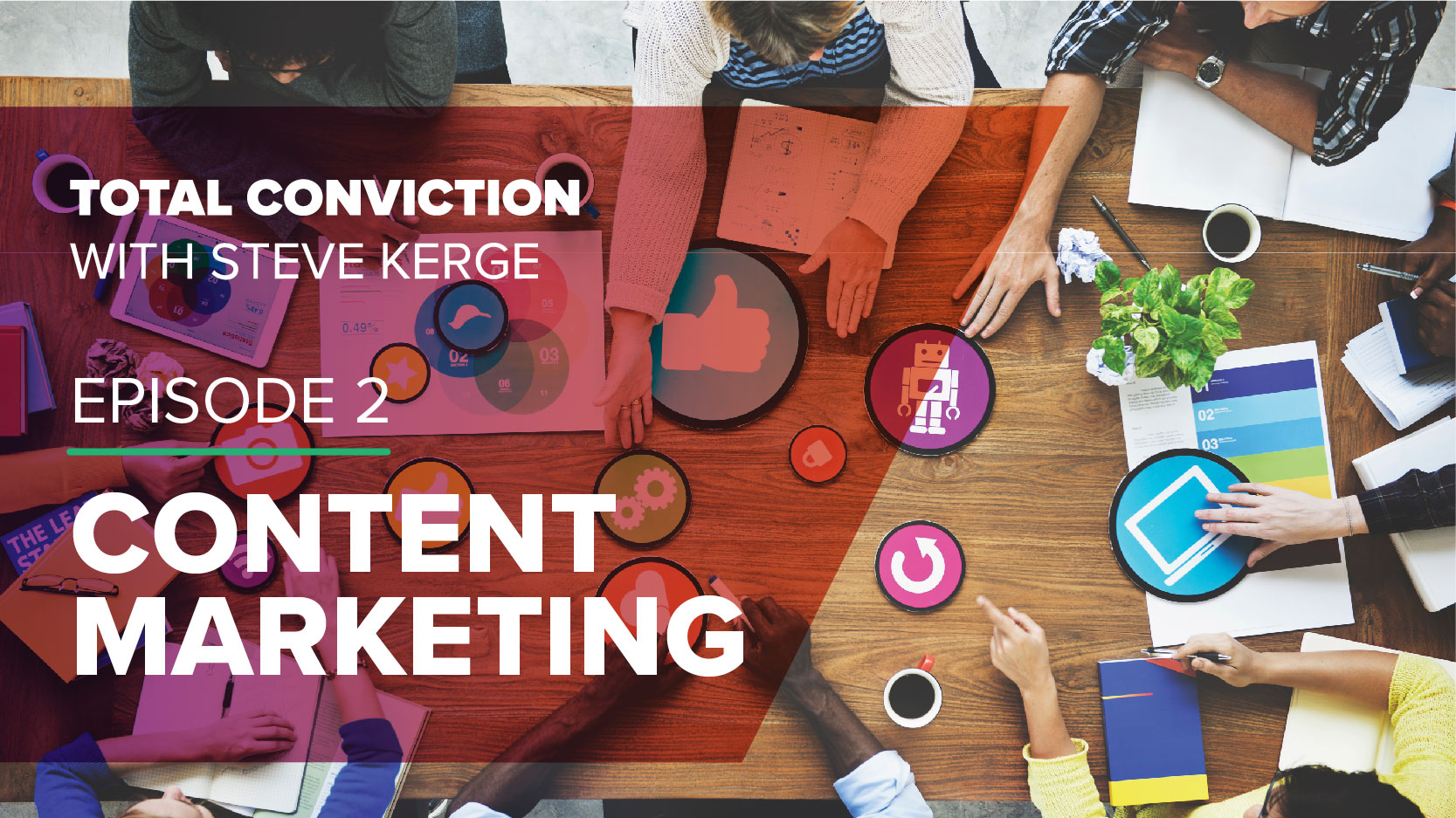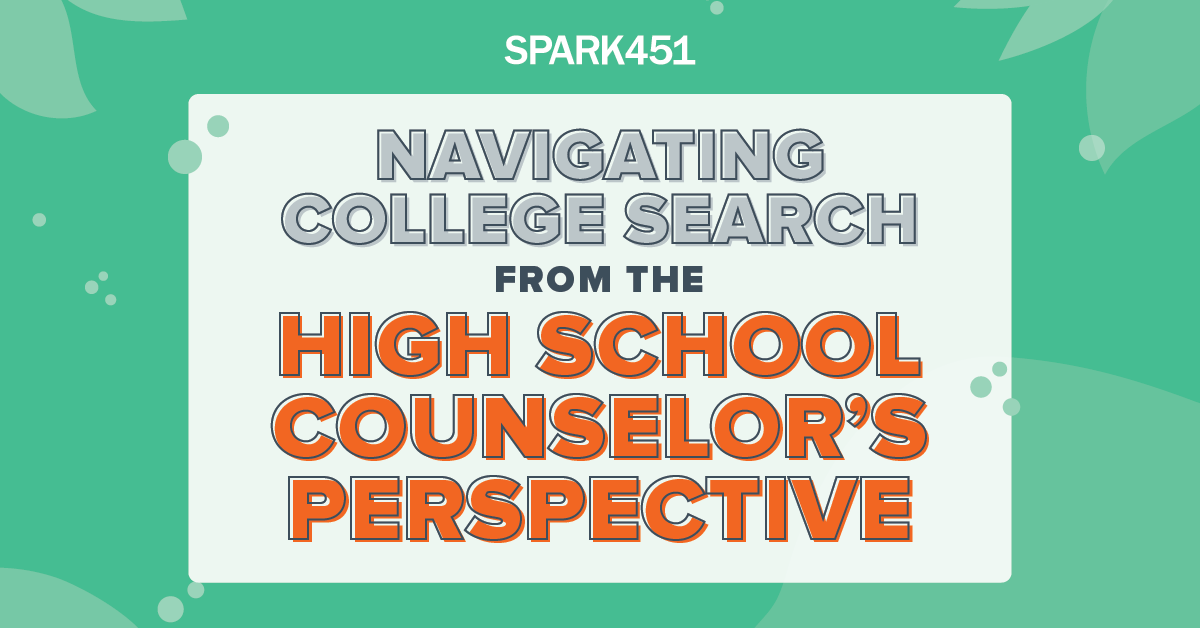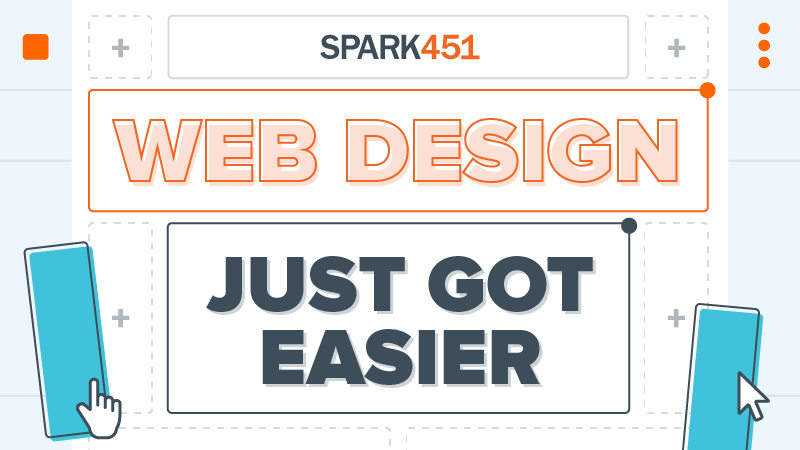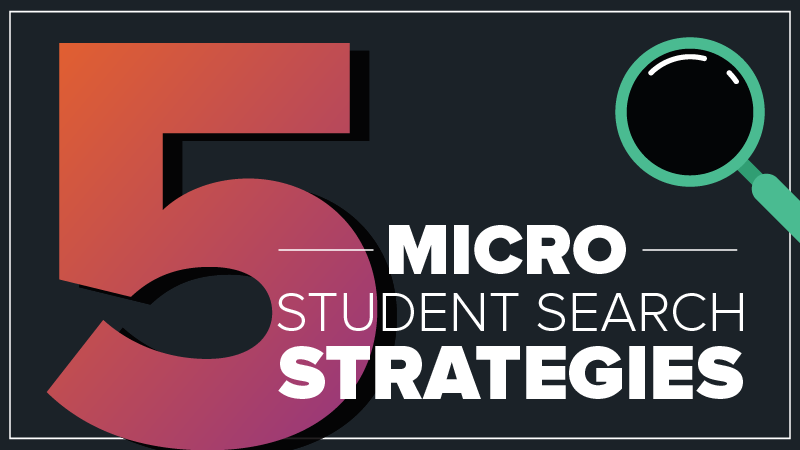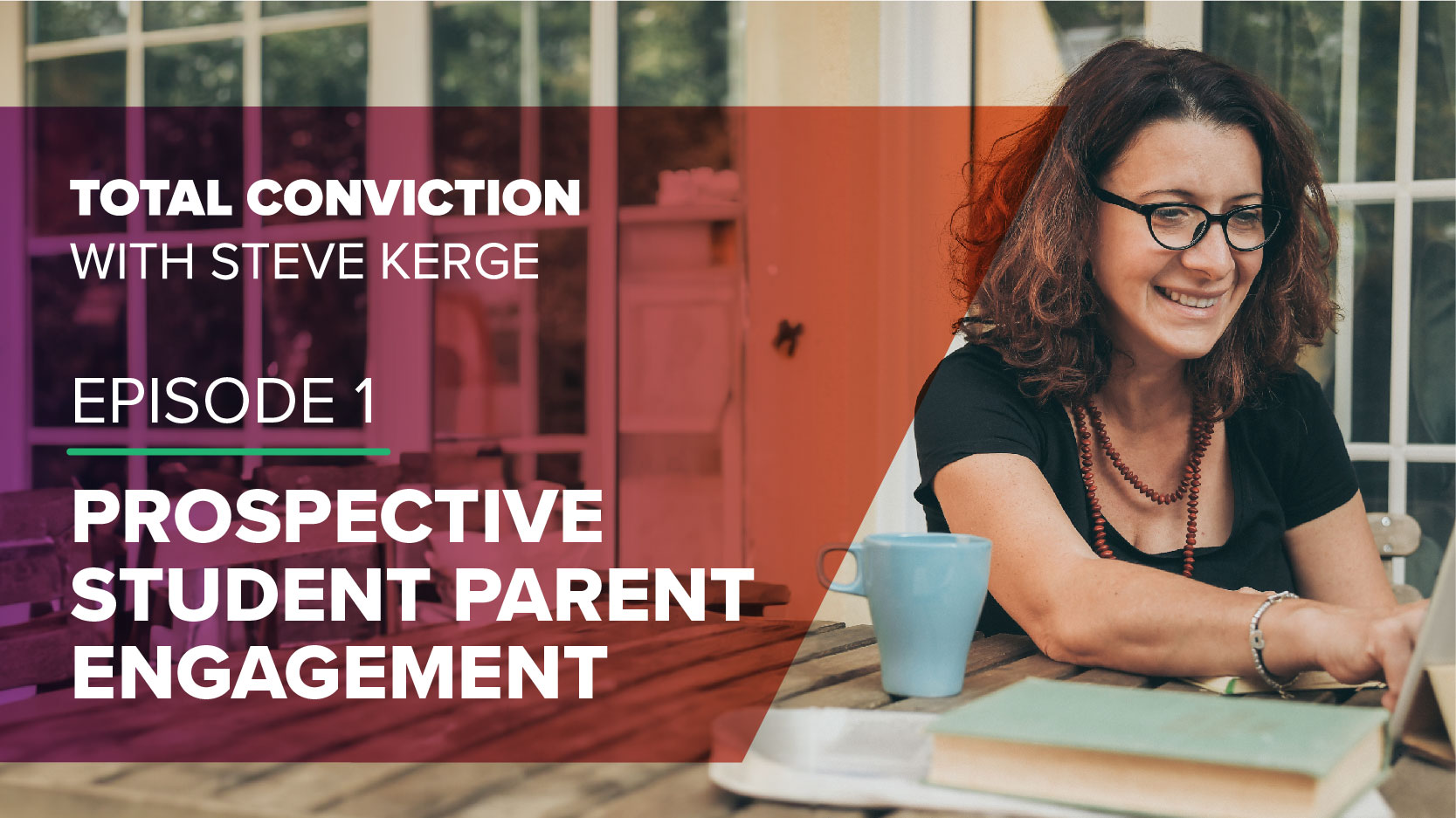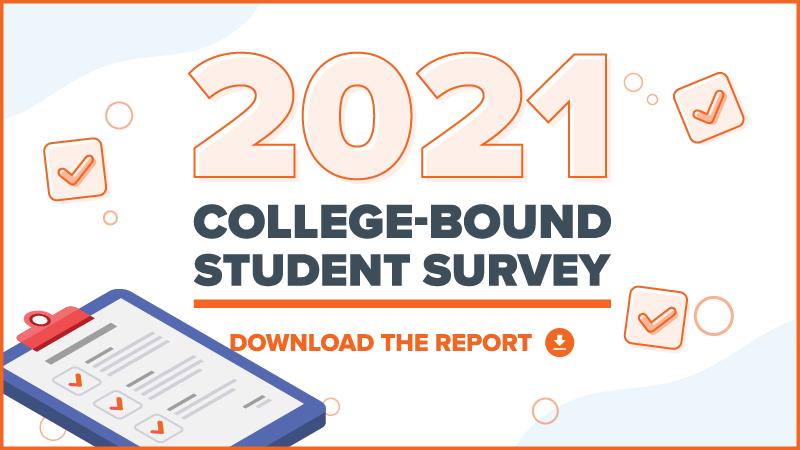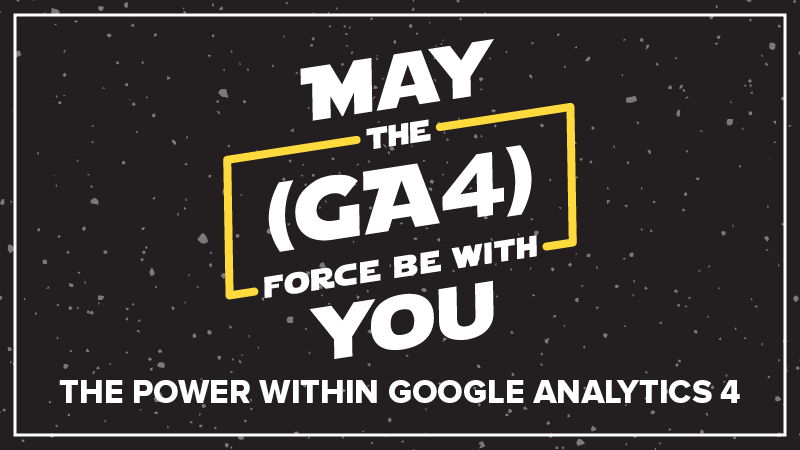Content Marketing
In the latest installment of our new video series, “Total Conviction,” Spark451 CEO Steve Kerge discusses why it’s critical to constantly deliver fresh, personalized content in order to successfully engage prospective students. He shares the different content types that resonate most, and offers a case study demonstrating the greater impact personalized content can have in enrollment marketing materials. Check it out above!
When you’re ready to discuss how to optimize your own institution’s content marketing plans, please reach out. Our team of enrollment marketing experts and seasoned content strategists will be happy to help you develop a budget-friendly plan that will support your goals.
You can also revisit the full collection of “Total Conviction” videos here!
Award-Winning Work: Spark451 and Collegiate Partners Recognized for Digital Marketing Excellence
WESTBURY, NEW YORK — Higher education marketing firm Spark451 is proud to announce that several recent digital marketing projects—launched in cooperation with its valued partner institutions—earned recognition in the latest Education Digital Marketing Awards.
“We develop our user-friendly and data-driven digital projects to help colleges and universities connect with students and achieve meaningful enrollment results,” says Irene Scala, Executive Creative Director at Spark451. “It’s truly an honor that our efforts are also being recognized by our peers in the industry. The Spark451 team is thrilled to share these awards with our partners.”
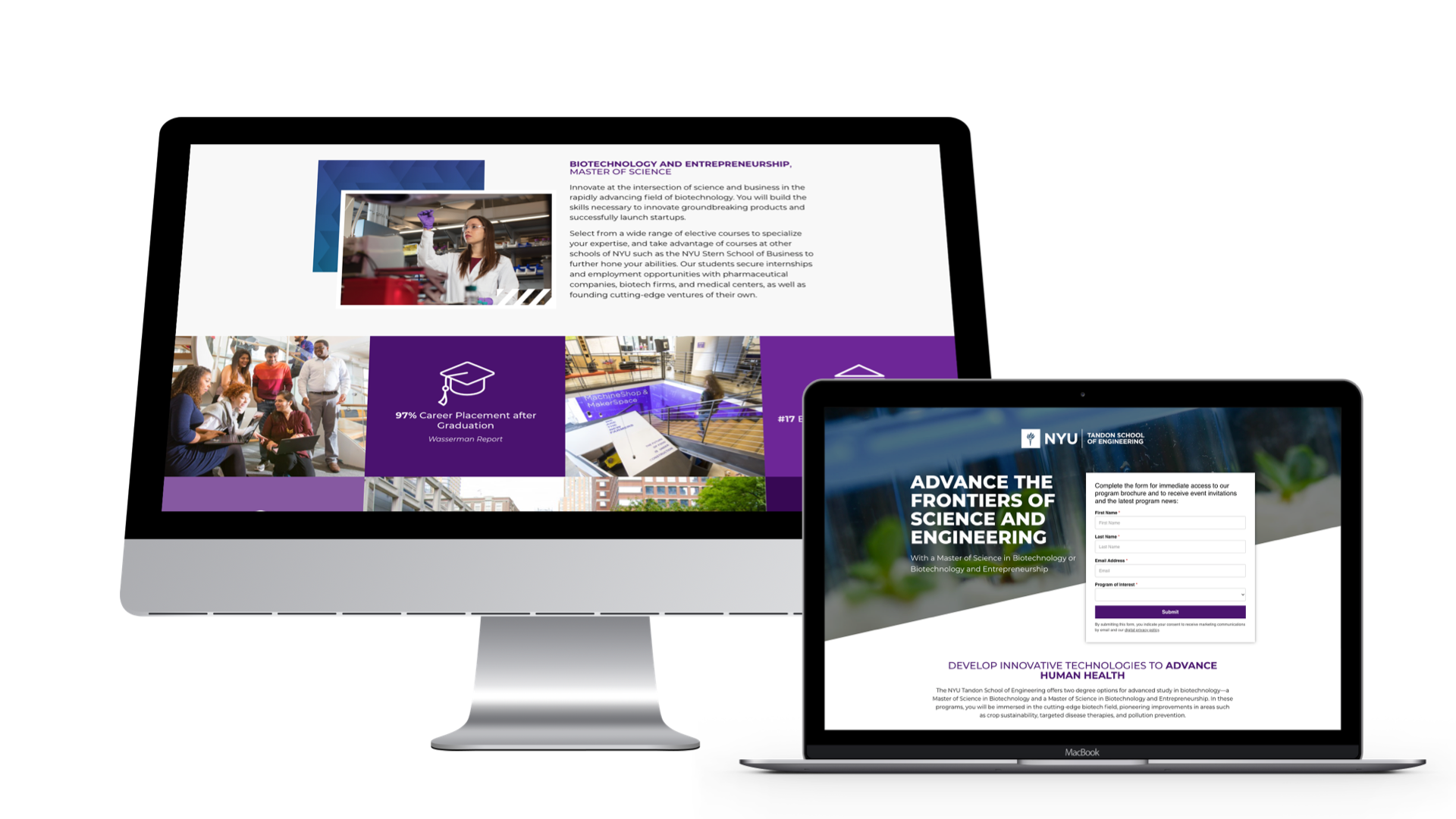
NYU Tandon School of Engineering
Category: Admissions Website or Microsite (Gold)
Project: Graduate Landing Page—Bio Tech Program
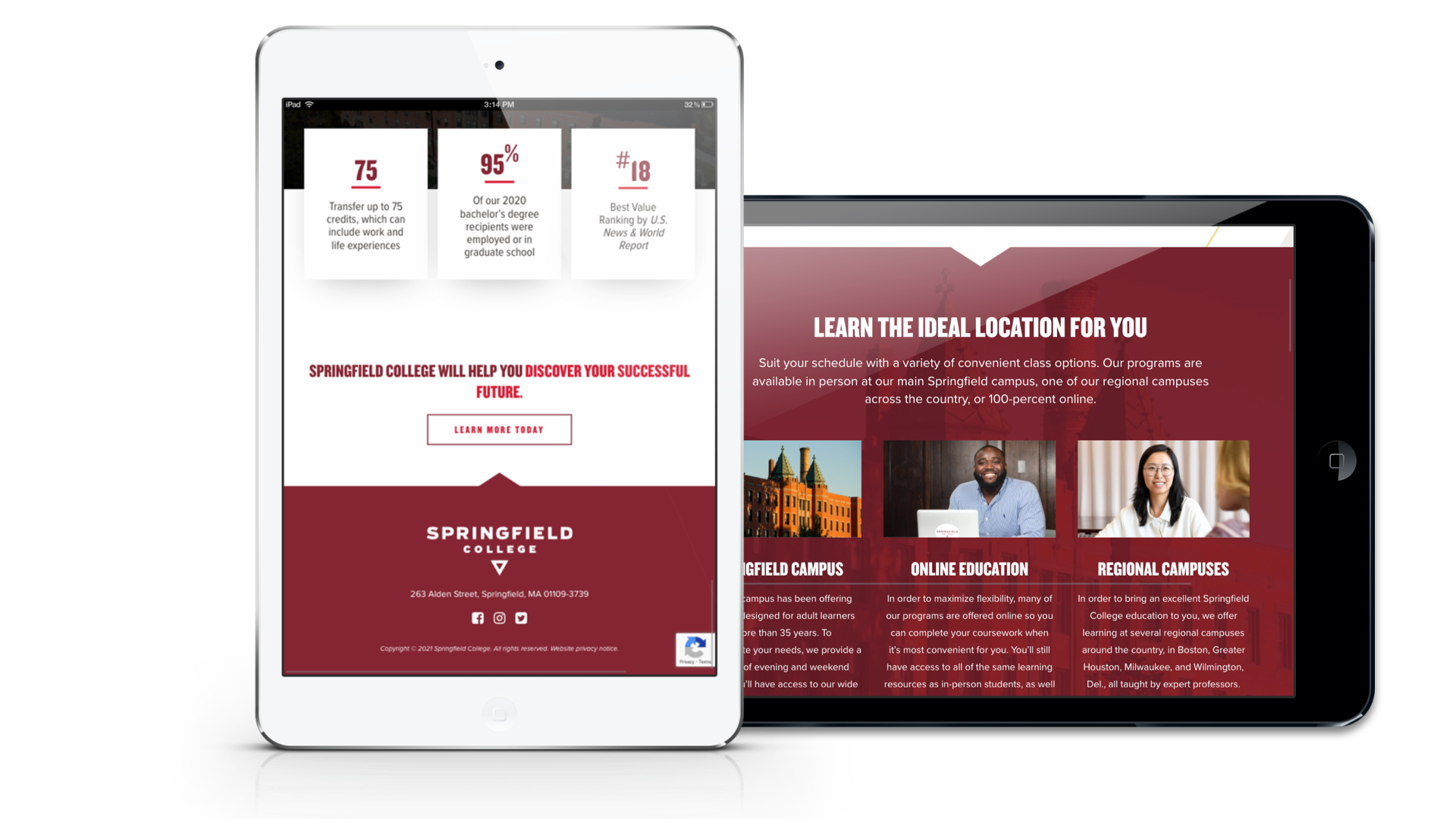
Springfield College
Category: Admissions Website or Microsite (Gold)
Project: Landing Page
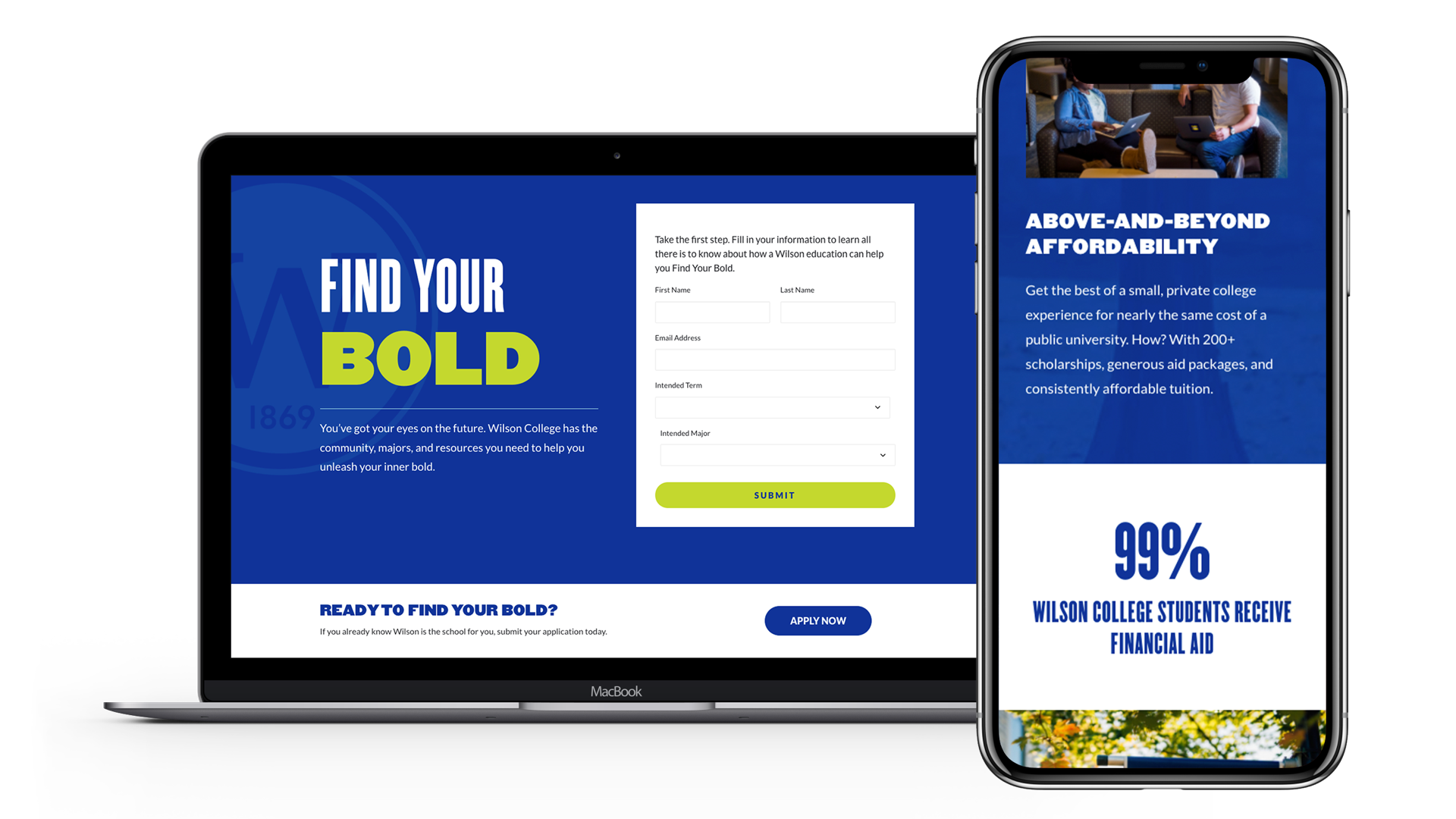
Wilson College
Category: Admissions Website or Microsite (Gold)
Project: Landing Page
Longwood University
Category: Digital Video Ad (Bronze)
Project: Instagram Open House Ad
Longwood University
Category: Digital Video Ad (Merit)
Project: Instagram and Snapchat Ad
Saint Louis University
Category: Digital Video Ad (Merit)
Project: EMIB Program
Reach out to discuss how Spark451’s award-winning team can help your institution gain a competitive edge.
Navigating College Search From the High School Counselor’s Perspective
The Spark451 team recently surveyed roughly 3,000 high school counselors from across the nation to get an updated sense of their perspectives on a variety of student search-related topics, and we shared our findings in a recent webinar. Even though you missed the live event, you can still access our discussion.
A recorded version of the webinar is now available. To access it, simply complete this form and we’ll send you a link to the recording right away! You’ll also be able to download the presentation deck.
During the session, Spark451 Senior Business Development Strategist Bill Sliwa and Client Strategist Yuliya Cormier revealed survey feedback from nearly 3,000 high school counselors on their:
- preferred ways to interact with college and university reps
- thoughts on in-person and virtual visits
- latest insights on the impact of COVID-19 on their own work and on the college search process
- candid thoughts on the state of school counseling
Web Design Just Got Easier
Blog
By Mike McGetrick and Rosario Chines
Website design and development is always a moving target. Our colleagues in higher education web design, in particular, often share with us that they are under-resourced and overwhelmed. It is therefore exciting when a tool that we use and love, WordPress, comes out with a release that can make life easier for the average web designer. Such is the case with WordPress 5.8, and the introduction of Gutenberg 2.0, the next generation of the WordPress front-end editing experience. What we are especially excited about is the extension of the block editor interface to that of the overarching theme, giving designers the ability to customize the global look and feel without having to delve deep into the WordPress codex. And while it won’t put any coders out of work (as WordPress shines brightest when its deep function set is deployed), it will give more power and autonomy to the average web designer.
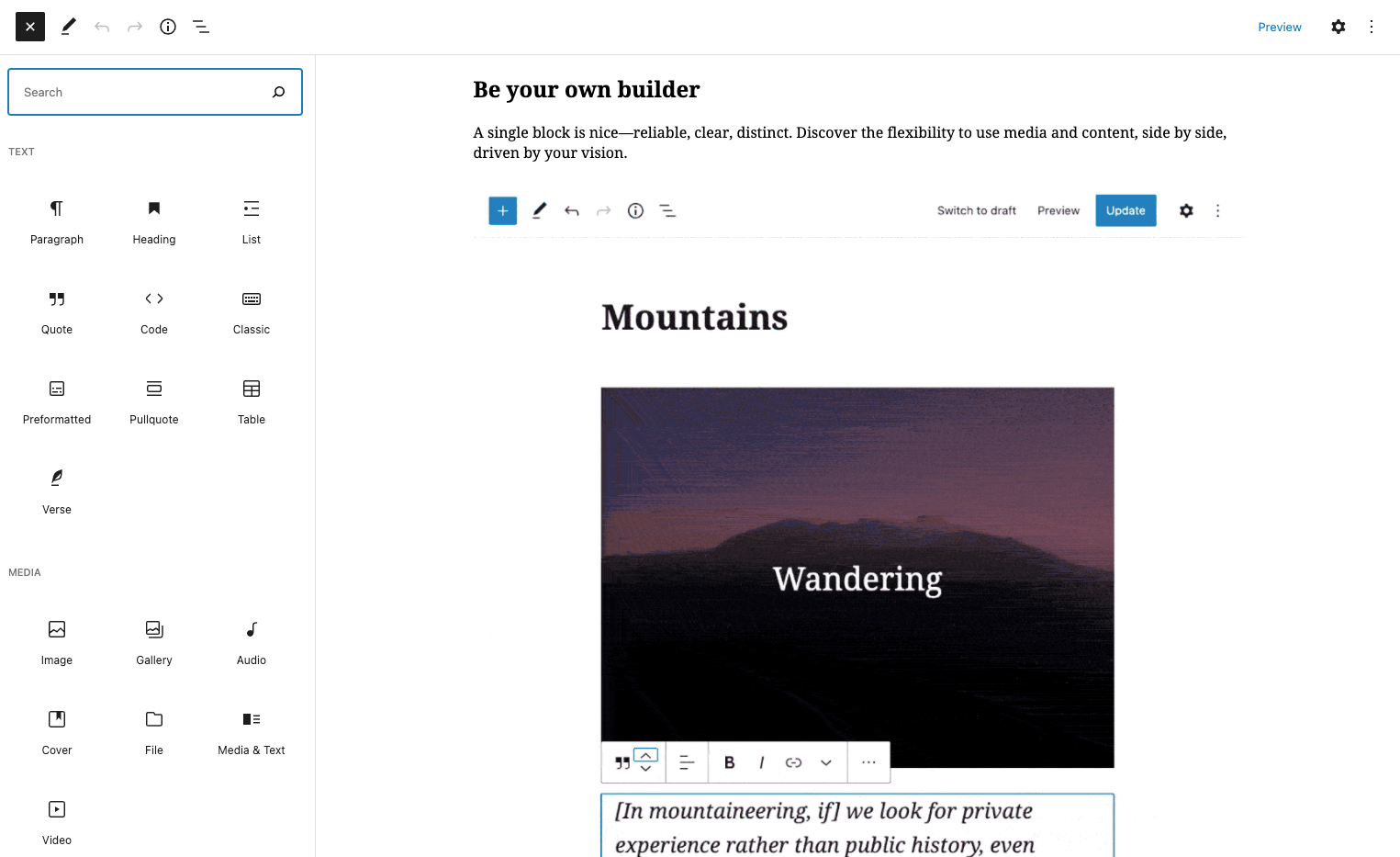
So, What is Gutenberg?
Introduced in WordPress 5.0, the Gutenberg project is WordPress’ answer to creating a more user-friendly and visual experience to building a website, without all the need for coding know-how. To start, you have an array of block options to start building your site by simply dragging and dropping them onto a page. You have options such as Heading, Paragraph, Image Gallery, and Quote, to name a few. These can be arranged in any which way and repositioned on the fly.
It doesn’t stop there. You can even create multiple column-based layouts, to help create a better visual hierarchy of information. Want to display three stats or images next to each other? Easy. Just choose the Columns block and select the amount of columns you need. Gutenberg will automatically create equal and responsive columns for you to drag and drop any of their blocks into.
However, WordPress understands that users already familiar with their dashboard may want to stick with their original editor, be it for specific pages or the entire site, so you’ll still have access to those tools. Don’t get stuck in the past for familiarity’s sake, though; most themes and plugins are embracing the new Gutenberg editor with full support. We highly recommend giving it a whirl to get the best and most modern WordPress experience out there.
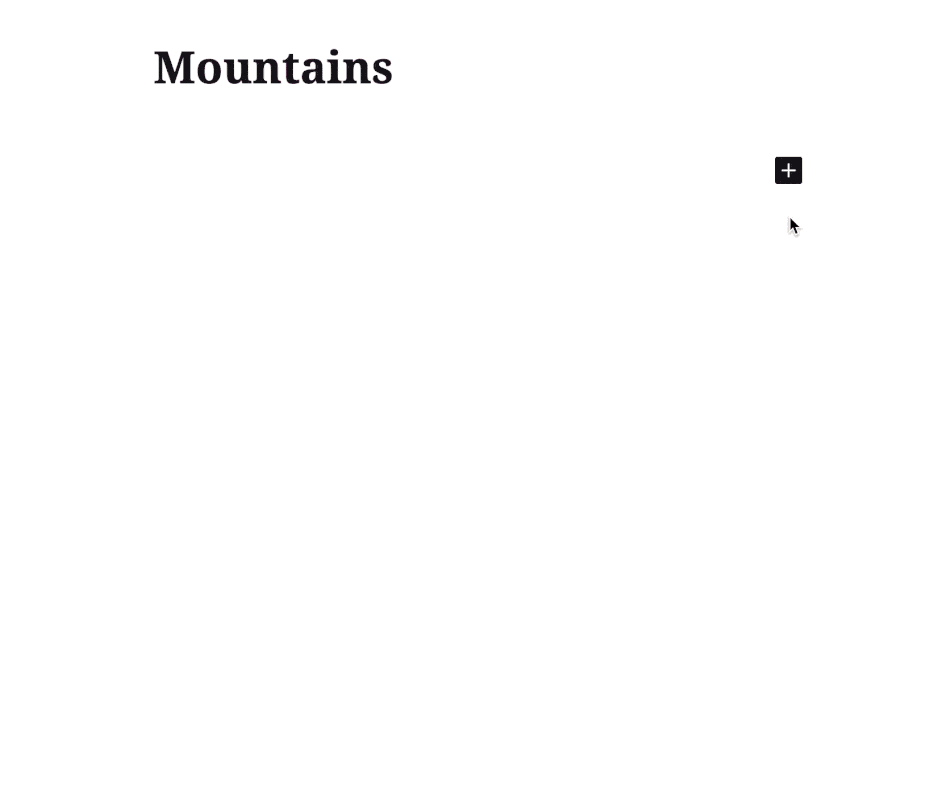
How Gutenberg is Evolving
Gutenberg 2.0 introduces Full Site Editing (FSE), giving you the ability to not only customize the content on a single page, but to do so on a global, site-wide scale. For example, you can create a consistent font family, size, and color for all of your Headings across your entire site. This is called Global Styles, and to put it simply, it’s awesome.
Furthermore, you’ll have the ability to create block-based templates. The days of creating a page from scratch are gone. Create a page template based on the blocks you need, and reuse that template an unlimited number of times. For example, if the Program page you created is exactly how you want your other Program pages to be laid out, save it as a template, and reuse it for all of your remaining program pages. Similarly, if you built a landing page that was highly effective in capturing leads, make it a template, and keep on succeeding.
Global Styles and Templates are just the beginning—the building blocks (ha, pun), so to speak. For any web designer, these are the basics when developing the look and feel of a website. That power is now in your hands.
Let’s say your brand colors recently changed. The thought of having to go through your site page by page to get those colors updated sounds like a nightmarish task. Well, don’t assign this to the intern just yet. You can now easily adjust those colors sitewide in seconds, wherever they are applied. What’s even better, it doesn’t end there.
We mentioned a few of Gutenberg’s built-in drag-and-drop options earlier, which are just the tip of the iceberg. With Gutenberg 2.0, they are introducing a slew of new blocks that you can implement across all of your pages and templates:
- Logo
- Site Title
- Page List
- Tagline
- Query Loop
- Duotone
Gutenberg even allows you to utilize these blocks across the entirety of your site, such as Headers, Footers, and Widgets. The idea that you can create consistent branding with these tools is a huge leap forward for WordPress and your website.
Noteworthy Feature: Theme Blocks
This particular feature is especially exciting, and deserves its own special mention. With Theme Blocks, you can take parts of an existing template and plug them in on any page. It’s simple and will save you hours of building pages.
Let’s say you created a page template that has a really enticing CTA, image gallery, and content specifically for a parent audience, but the new page you’re building is geared towards alumni and doesn’t need all of that parent-specific content. However, that image gallery really showcased all the great things happening on campus, and would be a great fit for your new alumni page. Theme Blocks allow you to take those template-specific blocks, and insert them anywhere across your site without the need to re-select the hundreds of photos you already hand-picked previously. You can even add or remove existing photos from the Theme Block once implemented, so they can differ from page to page.
This is just one example with the Image Gallery, but you can use the Theme Blocks with any of Gutenberg’s blocks to pull in and customize your previously made blocks of content.
Conclusion
With Gutenberg 2.0, the possibilities are endless, and the tool will save you tons of time when creating or editing your website on a global scale. When Gutenberg was first introduced, it changed the way we think about how websites are built and who has the skills to build them. This new update puts more of the power in your hands, without having to know any HTML or CSS to build your brand’s presence on the modern web.
Most WordPress plugins have adapted themselves to function with this new iteration of WordPress at this point, but it’s always best to check your plugins to ensure compatibility before updating. There are always alternatives out there, should your plugins be outdated or no longer receiving support, so don’t fret! Gutenberg is the future of WordPress for its developers, and they are sure to adapt. Developers who understand that also understand that its users are embracing these new user-friendly tools. Gutenberg 2.0 builds upon these tools, and allows for the average user to embrace this future. However, if you’re feeling overwhelmed by all the changes, your partners at Spark451 are always here to help. Feel free to reach out to discuss your latest web design goals and we’ll be happy to work with you to find a budget-friendly solution that will help you achieve your objectives.
5 Micro Student Search Strategies That Work
Blog
By Bill Sliwa and Ed Flaherty
In the enrollment world, we all plan ahead and go out like gangbusters every fall with the goal of generating applications from our inquiry pools and from new students we meet during fall travel. But, as every seasoned admissions professional knows, building a class is never a sprint—slow and steady wins the race.
While we all know to complement our fall application-driving activities with spring efforts focused around yield, robust mid-cycle application generation activities often fall off our radar. However, deploying supplemental efforts to attract new applications from students who are just starting to focus on the college selection process later in the year can yield incredible returns. (Remember, as the last two years have taught us, plans change and many students find themselves exploring other options throughout the spring semester of their senior year. It’s worth it to be ready to cater to them.)
A robust supplemental search campaign can not only provide a boost in applications, but these efforts will help you meet some students where they are. Even though it feels “late” to those of us in the admissions world, it’s just right for the recipients of a senior spring mailing. In fact, a January 2021 survey of then-current high school seniors found that 46% of students said they were still planning to apply to colleges or had not started their application process at that point.
21%
Of students from across our partner institutions’ Fall 2021 classes applied after February 1
44.7%
Higher yield rate for those students who applied after February 1, as compared to students who applied earlier
Five app-boosting micro strategies
Spark451 has successfully partnered with several colleges and universities to implement a combination of five successful micro search strategies that you can deploy later in the cycle to maximize engagement.
1. Enhance your data pool with Parent Append
Adding purposeful data, including parent email addresses, will enable you to boost your communication efforts and deliver relevant messaging for the family before their student applies.
2. Engage your pool in new ways
It is not uncommon for someone to “inquire” as a sophomore and all but forget about you by the time they’re ready to start applying, but they may be the perfect candidate during the spring of their senior year. Re-engaging your pool with short, engaging surveys about their interests, goals, or even their status in the search process can help get a better sense of where they are in their journey with your institution.
3. Deploy timely personalized content
A new campaign centered around where students are in the process can quickly build brand awareness and generate new applications. Be clear and concise with your messaging and calls-to-action.
4. Get to the point, with substance
Get in front of students and parents with a spring printed mailing that has an inspiring, timely, supportive message and a direct offer to engage with someone at your school. With less #collegemail clutter to compete with at this point in the cycle, your message can focus less on color and more on content.
5. Meet students where they are (online)
A digital marketing campaign is a great complementary way to reach students and parents with the right message at the right time. Timely messages about application incentives or deadlines help inspire urgency and drive action as critical deadlines approach.
Real Results: Micro Search Strategies In Action
Spark451 partnered with several institutions for supplemental student search later in the traditional cycle for Fall 2021 recruitment. By implementing the right recipe of micro search tactics, we saw great results.
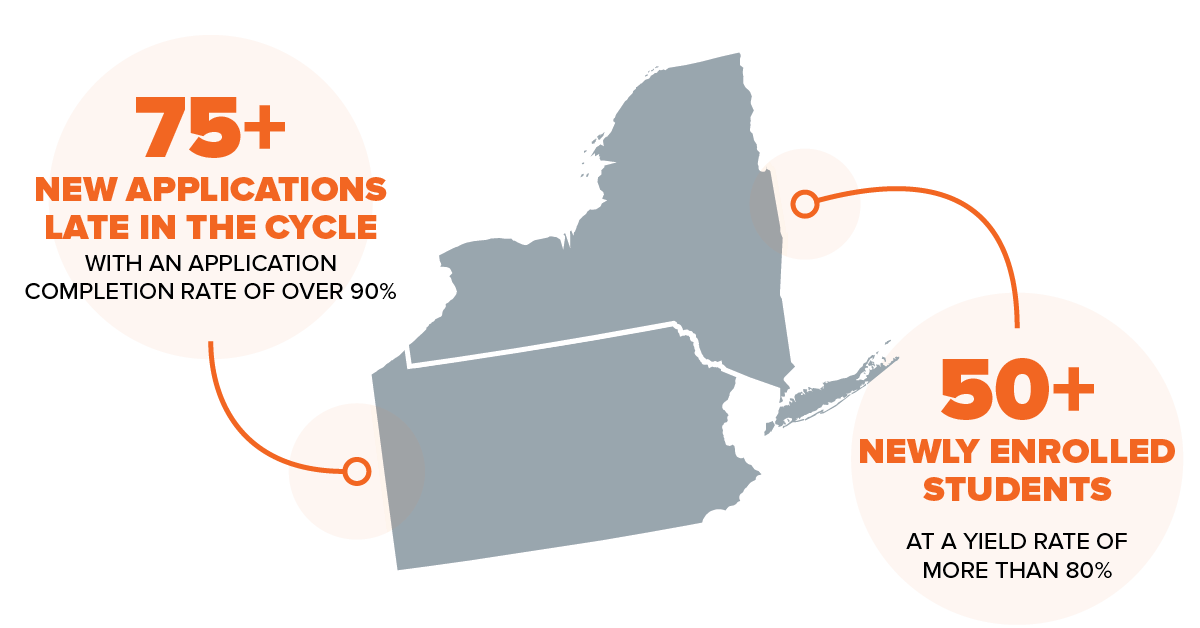
For example, a small private college in PA gained over 75 new applications late in the cycle with an application completion rate of over 90%. Similarly, a community college in New York state deployed a targeted application print campaign and gained 50+ new enrolling students at a yield rate of more than 80%.
Conclusion
We’d love to help you implement any or all of the five strategies we’ve outlined above, as it is never too late to have an impact. At the same time, we have many other solutions that can be implemented during this cycle—specifically, our personalized financial aid package, a great yield boost. Reach out when you’re ready to discuss strategies and tactics we can implement to support your enrollment goals.
Added Muscle for Your CRM
Blog
Over the past few months, we have been speaking to a variety of CRM users at colleges and universities across the U.S. They include admissions directors, associate directors, and specialists, as well as CRM managers and power users.
During those discussions, one common theme emerged: Nearly everyone’s desire to fully leverage their platform is at odds with the actual time and internal resources available to develop mature marketing and communications efforts.
Spark451’s new SparkAssist service will help you tap into the full power of your CRM by picking up wherever you and your team leave off. Our experienced CRM administrators, content creators, and higher education marketing experts have the context, creativity, and technical expertise to deliver advanced solutions that will best support your goals. The team is also well versed in all of the major platforms favored by admissions pros, including Slate, Salesforce/TargetX, Ellucian, Element451, and more.
Here are just a few ways we can support you and your team through SparkAssist:
- Planning, writing, designing, and building comprehensive personalized e-communication flows with dynamic content using Liquid Markup, Snippets, and similar tools
- Developing robust customized portals, communities, and microsites
- Managing complex data segments using advanced queries and reports, configurable joins, and individualized data connections
- Offering advanced data analytics through custom dashboards to promote data-driven decision-making
- Delivering trigger-based behavioral marketing messaging to website visitors
Because we know every admissions office is different, we offer a wide variety of customizable subscription and project-based models to ensure we’re delivering as much — or as little — as needed to meet your team’s specific needs. For more details, download our SparkAssist info sheet. And, when you’re ready, let’s connect to discuss.
Prospective Student Parent Engagement
TOTAL CONVICTION: EPISODE 1
Prospective Student Parent Engagement
When it comes to making a college decision, the influencers that truly matter can’t be found on a student’s Instagram feed, but rather, around the kitchen table. That’s right, as our College Bound Student Survey has proven year after year, a student’s family has the most sway over a student’s decision about a school. With that in mind, it only makes sense to make sure parents of prospective students fully understand the opportunities available for their students at your college or university.
In the first installment of our new video series, “Total Conviction,” Spark451 CEO Steve Kerge spends a few minutes discussing the importance of engaging with parents of prospective students, and he even offers a few tips for doing so successfully. Check it out now:
When you’re ready to discuss parent engagement strategies for your institution, please reach out. Our team of enrollment marketing experts will be happy to help you develop a budget-friendly plan that will move the needle.
You can also revisit the full collection of “Total Conviction” videos here!
2021 College-Bound Student Survey: Download The Report
You already know that the college admissions world has been working through some unique challenges in the last couple of years (to say the least). However, you’ll probably still be surprised by some of the findings from Spark451’s latest College-Bound Student Survey. For example, in spite of all the hype in the media, just about half of students who responded to our survey said that an institution’s COVID vaccine requirements had NO impact on their enrollment decisions.
This summer, thousands of 2021 high school graduates responded to the Spark451 Education Research Division’s 10th annual survey on the college selection process. Download the full report to gain access to all the valuable information for college admissions professionals, including:
- The Class of 2025’s social media habits
- Students’ reactions to test-optional admissions policies
- The effect of fee waivers on application decisions
- How students feel about text messages from schools
Download the report now. Then, reach out. We’ll be happy to help you determine if your upcoming admissions marketing and student search plans are fully in line with the latest data from students.
May the (GA4) Force Be With You
Blog
Google Analytics (GA) released its most recent update, Google Analytics 4 (GA4), and has introduced some enhancements that are quite useful to us as higher education marketers. First, we think it’s important for you to understand what GA is for—understanding your website traffic and using the data to make informed decisions in your marketing plans. For example, GA tracks how many unique visitors land on a website, whether they arrived at that site organically or through a paid ad source, where visitors are coming from geographically, the time of day they’re landing on the site, and day of the week. We use these details to drill down to incredible detail and find commonalities and trends which can further inform us how to wisely spend marketing dollars and maximize ROI.
With this in mind, we can now answer this core question: How does the rollout of the improved GA4 differ from what was available in the previous iteration of the tracking tool (formerly called Universal Analytics, or UA)?
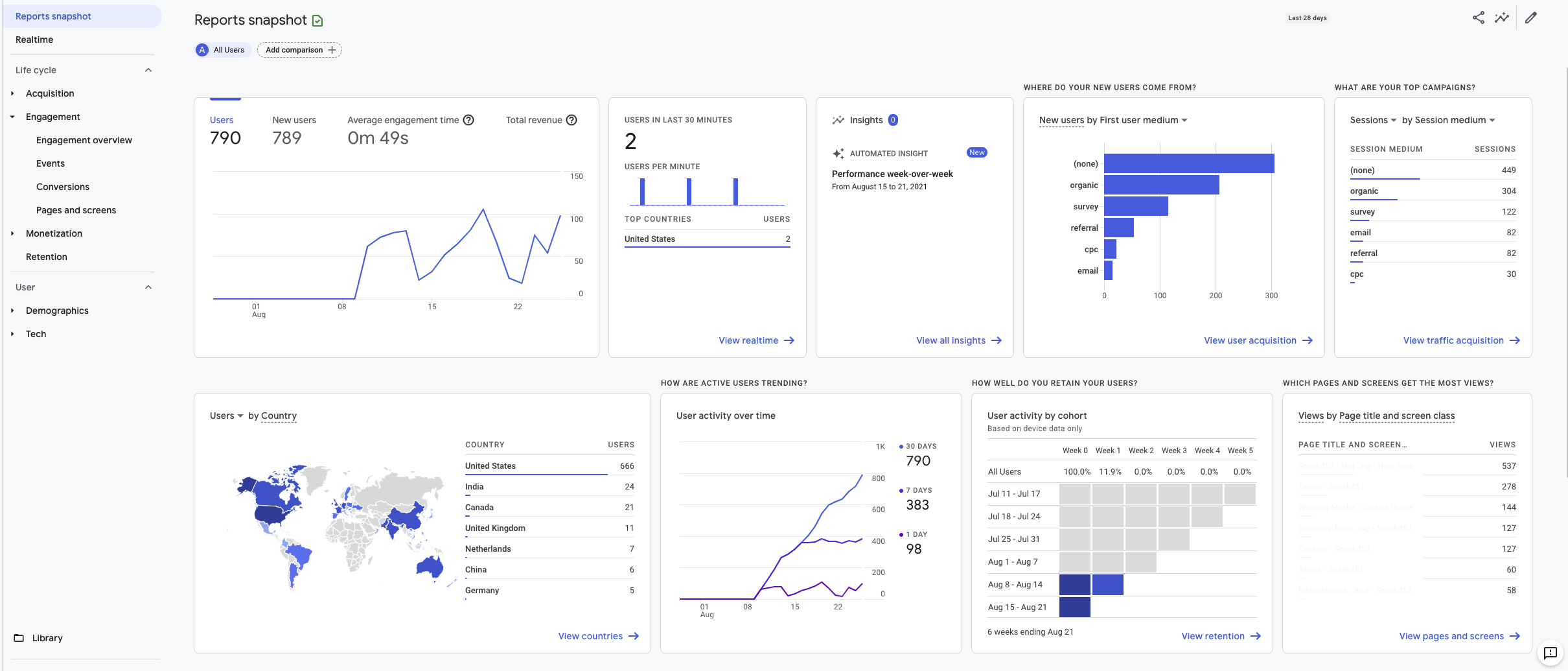
A Hub for Analysis
While the GA4 interface may seem complex and overwhelming at first, it has become a powerhouse of a tool that requires much less manual work to get your analytics off the ground. Its increased automation gives you hours back to your day and allows you to use its pre-built components to start connecting your data and reporting it in one fluid stream.
You can slice and dice your data however you need to showcase it, because GA4 has the pre-built templates you want to get your data analysis started. It also has the customization options to allow you to start dreaming big. The Analysis Hub is where you’ll find a variety of reports to start out with. For example, GA4 includes a custom report for “Funnel Exploration,” which enables you to see a user’s interaction with steps they took before submitting an inquiry form or starting an application. “Path Exploration” is another report that will show you a user’s pathway through your website; where did they come from, and what path did they take to peruse your website?
“Free-form” and “Cohort Analysis” reports will help you answer other important questions, such as:
- What types of visitors are coming to your site—traditional high school students, adult degree completers, or graduate prospects?
- What pages are users looking at before taking an action?
- Is there a common thread in the customer journey between landing on your homepage to submitting an app?
You can start to answer all of these questions with the report customization options within GA4.
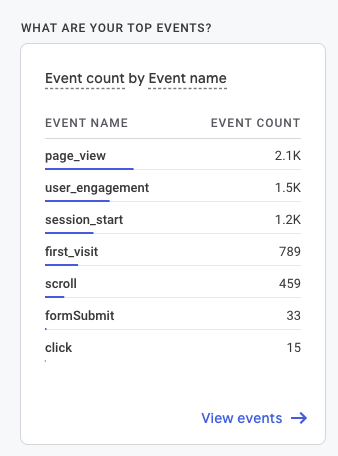
Enter “Events”; More Than Page Views
Universal Analytics (the prior version of GA) tracked user sessions during a website visit, accruing session-based data from a user’s time on a webpage, and it reported these actions back as “hits” on your website. GA4 takes these “session-based hits” and ups the ante by providing a fuller picture of what users are taking action on, with the use of “events” for each step they take. Now, each action taken on your website is tracked as an event. GA4’s default tracking events include click, scroll, file downloads, video start, and video complete. Ultimately, these advanced metrics will be the key in uncovering behavioral patterns to inform your content strategy and marketing tactics.
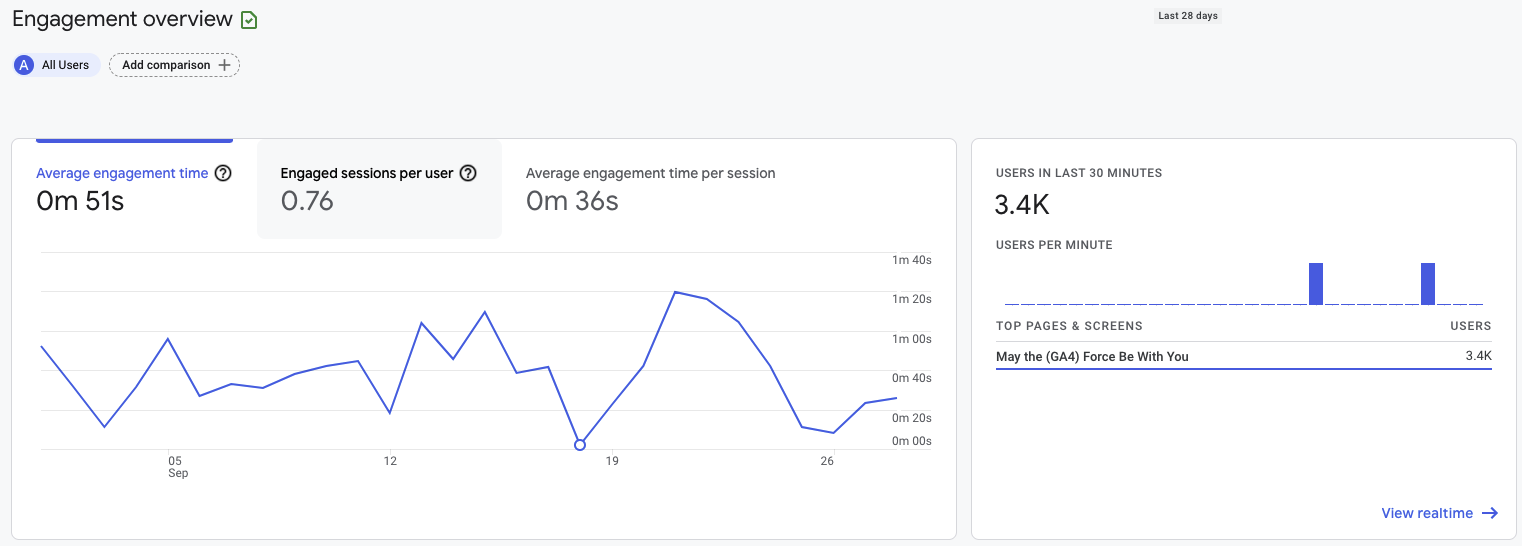
Say Goodbye to Bounce Rate
Bounce rate, the trusty, yet one-sided metric that tracked the number of visitors who navigated away from your website, has made its own exit from the new Analytics. Replacing it is “engagement rate,” a more useful measure of time spent on your site. Unlike bounce rate, this new metric doesn’t just show you how many users leave your site, but it dives deeper, considering one or more actions, such as being active on the website for 10 or more seconds, engaging in two or more page views, and/or a conversion event firing. This is a favorable update if you’re looking to squeeze out as much information about the user experience on your website as possible, since it exposes more than just the fact that some users leave, or bounce. Now, you can look at how they enter the site and better understand whether your website content is engaging for your targeted audiences.
Now that Google Analytics has upped its game, it’s time to leverage this tool as your (not-so) secret weapon to evaluate your website’s strengths and challenges. Having so much analytical power at your fingertips can be overwhelming as you start to explore the tool (it does, after all, have a completely new look), but it will be worth all of your marketing dollars to invest the time to learn the tool’s insights for your institution’s website. If you don’t know where to begin, we can help you get started. Reach out to learn more about how we can help you leverage the force behind GA4.
Trendcast: The Rising Costs of Paid Digital Media
In the last year, vast changes in the paid digital media landscape have been reshaping how advertisers execute their digital marketing strategies. Most notably, tracking transparency earlier in 2021 and the resulting targeting limitations caused marketers to rethink their approach to targeting within Google and Facebook platforms. However, at the same time, the heightened reliance on digital advertising driven by the pandemic continued, so these platforms became more and more crowded with advertisers, which led to fierce competition and ultimately, rising costs.
Now, a new report from Business Insider analyzing costs from Q1-2021 and Q2-2021, as well as comparing year-over-year costs, shows the true impact of all of these paradigm shifts. The report compares CPC and CPM—the main metrics that measure cost as a factor of competition across all major paid digital advertising platforms such as Facebook, Amazon, Google (YouTube included), and Snapchat. CPC is short for “cost-per-click,” and CPM, or cost per mille, indicates how much it costs to serve your ad to 1,000 users.
Here are some top-level takeaways:
- Apple’s newly-implemented, ad-tracking transparency regulations forcefully cut back advertisers’ ability to set hyper-specific targeting for ad campaigns geared toward Apple users, increasing cost for advertisers to serve ultra-relevant ads to these audiences.
- Facebook’s (and Instagram’s) CPM prices rose 89% year-over-year, as of July 2021
- Facebook’s average price per ad increased 47% year-over-year in the second quarter, and according to the article, the platform “warned investors that ad prices are likely to continue to climb in the second half of the year.”
- YouTube CPMs also reportedly rose 108% year-over-year in July. (This is in line with previous predictions that video will continue rising in popularity across the web, but especially in paid advertising.)
While this report shows that competition is steep and costs are especially high across platforms, keen strategy, all-hands-on-deck monitoring, and a data-driven approach for your digital media campaigns are what will make the difference between just spending budget and achieving enrollment goals.
To discuss specific tactics that will ensure your institution is maximizing its digital media marketing dollars in today’s increasingly competitive digital landscape, reach out now. We’d be happy to connect you with a Spark451 digital marketing specialist.
